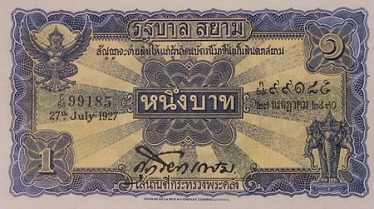
1 Baht (2 types isued in 1925 and 1928)
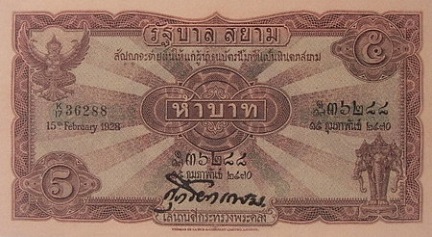
5 Baht (2 types isued in 1925 and 1928)
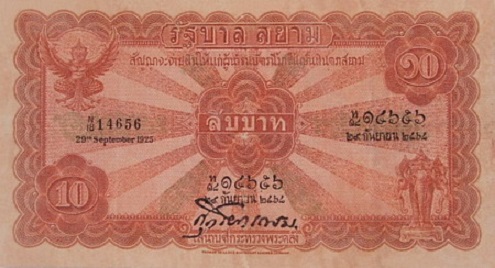
10 Baht (2 types isued in 1925 and 1928)
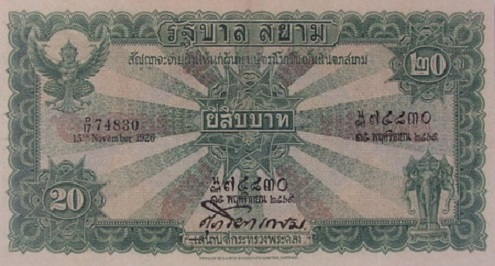
20 Baht (2 types isued in 1925 and 1928)
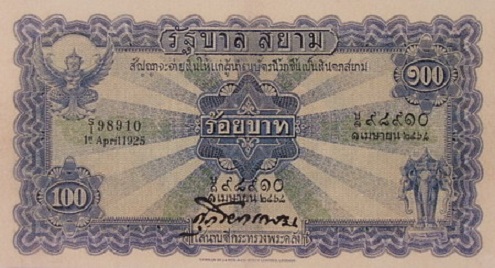
100 Baht (2 types isued in 1928)
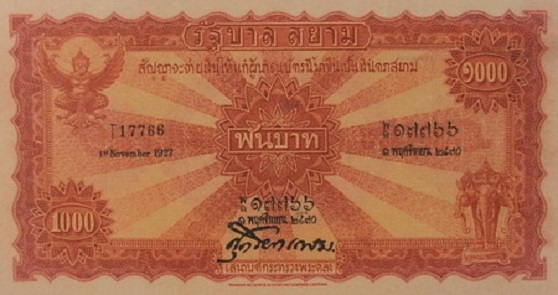
1000 Baht (2 types isued in 1928)
Appraisal price ; click on each denomination

Banknote Info
His Royal Highness Crown Prince Vachirawut ascended the throne to become the 6th monarch of the Chakri Dynasty on 11th November 1910. In early of the reign, the 1st series banknotes had been still circulated.
The government intended to change the form of banknotes and seek the company to print. Thomas de la Rue finally won the bid and was assigned to print the 2nd series banknotes.
This was the first series of Thai banknotes to bear an image due to counterfeiting. But there was not watermark in the paper.
King Rama 6 considered that picture of the Royal Ploughing Ceremony was appropriate to appear on a banknote because the ceremony representing an important part of the Thai culture.
The 2nd series banknotes composes of 6 denominations; 1 baht, 5 baht, 10 baht, 20 baht, 100 baht and 1000 baht. At the beginning the banknotes were print with the title "Promise to pay to bearer on request in Siamese currency" that comply to the current currency act. Then the Temporary Currency Act was announced in 1918 to cancel the right to pay.
Until the Currency Act in 1928, it was specified that country's money consisted of banknotes and coins. So the later banknotes were changed the title to "The banknote is legal tender in accordance with the law".
